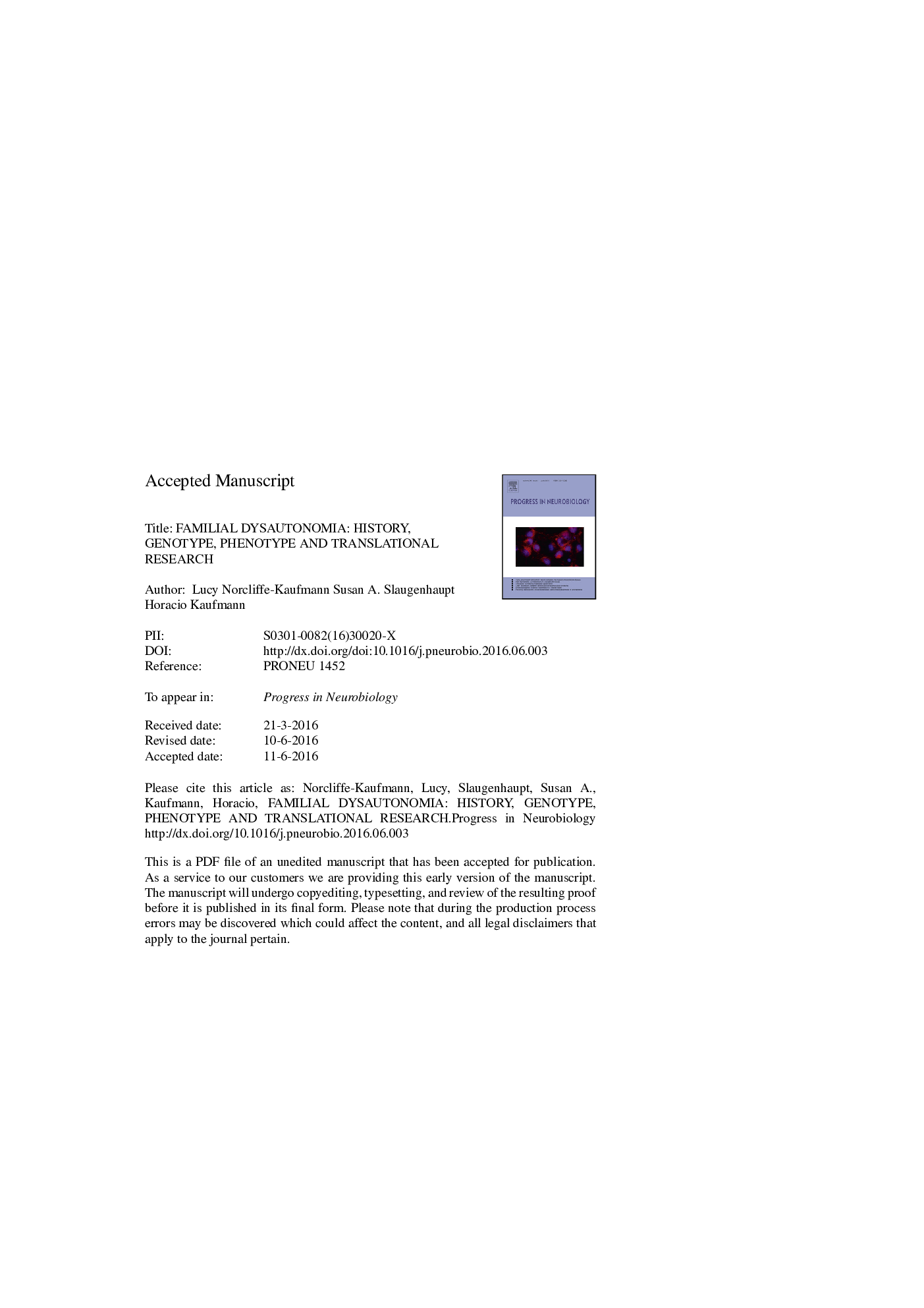| Article ID | Journal | Published Year | Pages | File Type |
|---|---|---|---|---|
| 5739149 | Progress in Neurobiology | 2017 | 69 Pages |
Abstract
Familial dysautonomia (FD) is a rare neurological disorder caused by a splice mutation in the IKBKAP gene. The mutation arose in the 1500s within the small Jewish founder population in Eastern Europe and became prevalent during the period of rapid population expansion within the Pale of Settlement. The carrier rate is 1:32 in Jews descending from this region. The mutation results in a tissue-specific deficiency in IKAP, a protein involved in the development and survival of neurons. Patients homozygous for the mutations are born with multiple lesions affecting mostly sensory (afferent) fibers, which leads to widespread organ dysfunction and increased mortality. Neurodegenerative features of the disease include progressive optic atrophy and worsening gait ataxia. Here we review the progress made in the last decade to better understand the genotype and phenotype. We also discuss the challenges of conducting controlled clinical trials in this rare medically fragile population. Meanwhile, the search for better treatments as well as a neuroprotective agent is ongoing.
Keywords
MAOFDAIKBKAPsnRNPsIPSCDRGl-DOPAFamilial dysautonomiaMRIepigallocatechin gallateOctUnited StatesMagnetic resonance imagingOptical coherence tomographyCNSsmall nuclear ribonucleoproteinsblood brain barrierBBBInduced pluripotent stem cellscentral nervous systemNINDSCranial nervePhosphatidylserineNational Institute of Neurological Disorders and Strokemonoamine oxidaseIKAPdorsal root ganglia
Related Topics
Life Sciences
Neuroscience
Neuroscience (General)
Authors
Lucy Norcliffe-Kaufmann, Susan A. Slaugenhaupt, Horacio Kaufmann,
